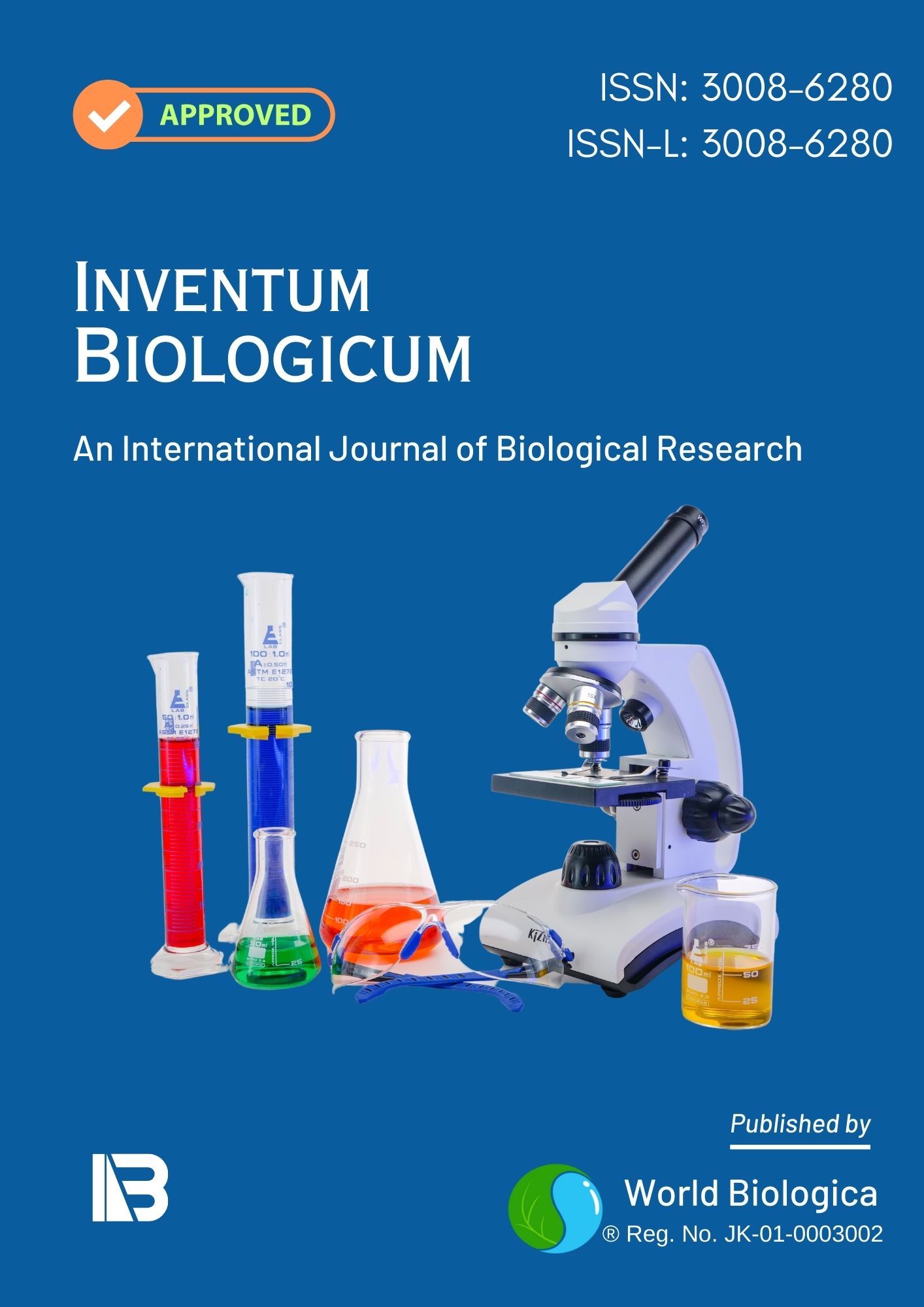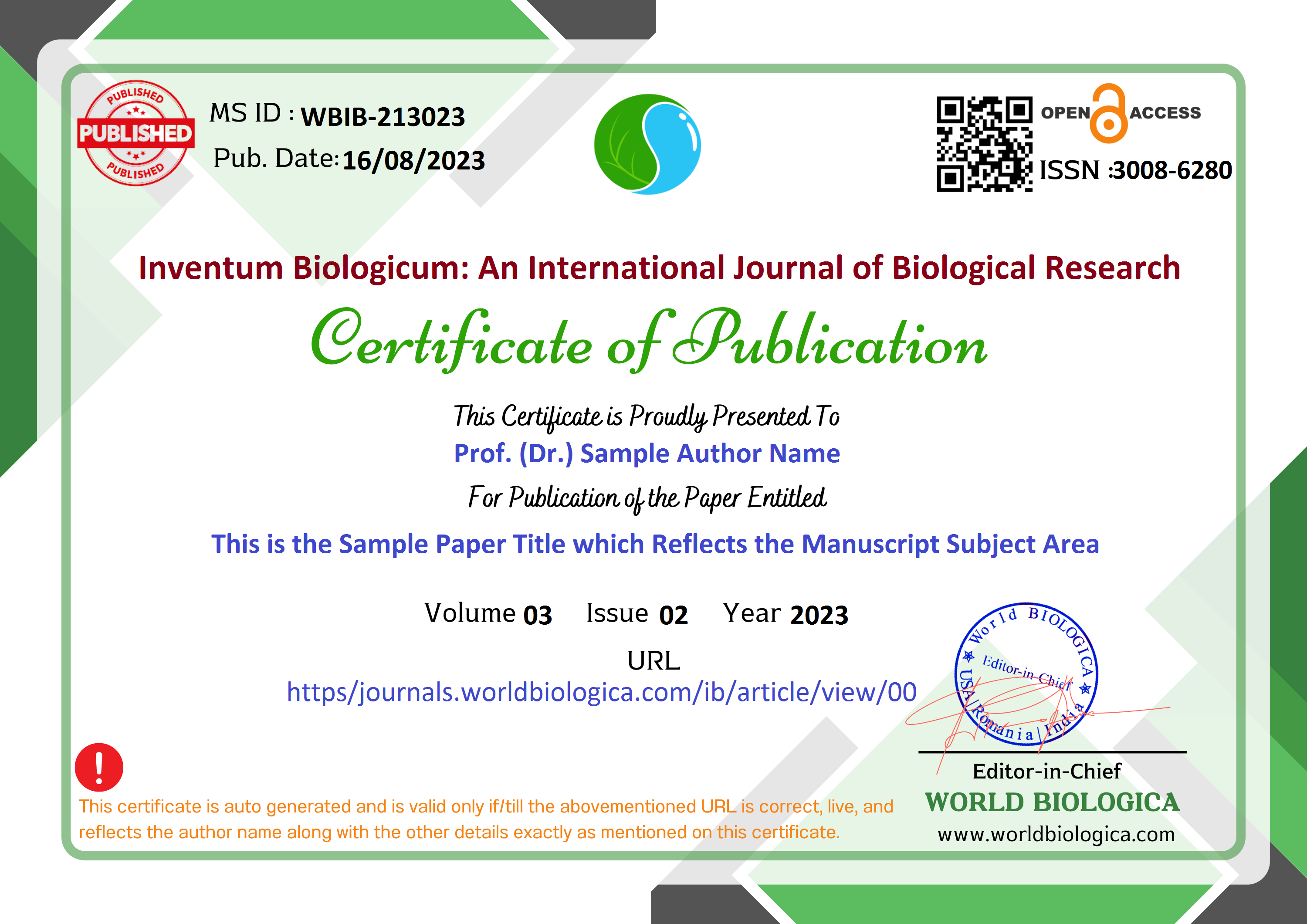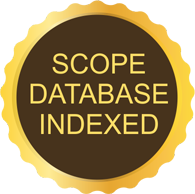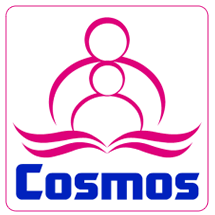Contrast Study and Speckle Tracking Echocardiography for Assessment of Left Ventricular Function in Apical Hypertrophic Cardiomyopathy
Keywords:
Hypertrophic cardiomyopathy, Apical hypertrophic cardiomyopathy, Strain echocardiography, Yamaguchi syndrome, Dimensional XStrain, EchocardiographyAbstract
Apical hypertrophic cardiomyopathy (AHCM) is a rare phenotypic variant of hypertrophic cardiomyopathy (HCM), most commonly seen in Asian men (Yamaguchi syndrome). It is characterized by hypertrophy, predominantly affecting the cardiac apex, with an "ace of spades"-shaped left ventricular (LV) cavity best seen on the 4-chamber view of a transthoracic echocardiogram (TTE). However, TTE can be falsely negative in 30% of AHCM cases, largely due to difficulties in delineating endocardial border. The diagnostic criteria for apical cardiac hypertrophy are: 1) asymmetric LV hypertrophy - predominantly at the apex of the ventricle; 2) LV wall thickness of 15 mm or more during diastole; and 3) apical to posterior wall thickness ratio of 1.5 or more determined by 2-dimensional echocardiography or cardiac magnetic resonance imaging. Here, we are presenting a case of elderly male who visited our cardiac OPD for a check up due to atypical chest pain, cough and mild fever for 5 days. His resting ECG showed left ventricular hypertrophy with deep T wave inversion in precordial leads V2-V6, consistent with AHCM. An exhaustive transthoracic echocardiography (TTE) with contrast study (CS) and speckle tracking imaging by 4Dimensional XStrain speckle tracking echocardiography (STE) was performed to provide a clinching diagnosis.
Downloads
References
Sakamoto T, Tei C, Murayama M, Ichiyasu H, Hada Y. Giant T wave inversion as a manifestation of asymmetrical apical hypertrophy (AAH) of the left ventricle. Echocardiographic and ultrasono-cardiotomographic study. Jpn Heart J, 1976;17:611-6293.
Jan MF, Todaro MC, Oreto L, Jamil Tajik A. Apical hypertrophic cardiomyopathy: present status. Int J Cardiol, 2016;222:45-759.
Hughes RK, Knott KD, Malcolmson J, Augusto JB, Mohiddin SA, Kellman P, Moon JC, Captur G. Apical hypertrophic cardiomyopathy: The variant less known. Journal of the American heart association. 2020;9:e015294.
Eriksson MJ, Sonnenberg B, Woo A, Rakowski P, Parker TG, Douglas Wigle E, et al. Long-term outcome in patients with apical hypertrophic cardiomyopathy. J Am Coll Cardiol, 2002;39:638-645.
Sakamoto T, Amano K, Hada Y, Tei C, Takenaka K, Hasegawa I, et al. Asymmetric apical hypertrophy: ten years experience Postgrad Med J, 1986;62:567-570.
Ommen SR, Mital S, Burke MA, Day SM, Deswal A, Elliott P, et al. 2020 AHA/ACC guideline for the diagnosis and treatment of patients with hypertrophic cardiomyopathy: a report of the American College of Cardiology/American Heart Association Joint Committee on clinical practice guidelines. J Am Coll Cardiol. 2020;76:e159–e240.
Neubauer S, Kolm P, Ho CY, Kwong RY, Desai MY, Dolman SF, et al. Distinct subgroups in hypertrophic cardiomyopathy in the NHLBI HCM Registry. J Am Coll Cardiol. 2019;74:2333–2345.
Yin Y, Hu W, Zhang L, Wu D, Yang C, Ye X. Clinical, echocardiographic and cardiac MRI predictors of outcomes in patients with apical hypertrophic cardiomyopathy. Int J Cardiovasc Imaging. 2022;38:643–651.
Kubo T, Kitaoka H, Okawa M, Hirota T, Hoshikawa E, Hayato K, et al. Clinical profiles of hypertrophic cardiomyopathy with apical phenotype–comparison of pure-apical form and distal-dominant form. Circ J. 2009;73:2330–2336.
Moon J, Shim CY, Ha JW, Cho IJ, Kang MK, Yang WI, et al. Clinical and echocardiographic predictors of outcomes in patients with apical hypertrophic cardiomyopathy. Am J Cardiol. 2011;108:1614–1619.
Klarich KW, Attenhofer Jost CH, Binder J, Connolly HM, Scott CG, Freeman WK, et al. Risk of death in long-term follow-up of patients with apical hypertrophic cardiomyopathy. Am J Cardiol. 2013;111:1784–1791.
Elliott PM, Anastasakis A, Borger MA, Borggrefe M, Cecchi F, et al. ESC guidelines on diagnosis and management of hypertrophic cardiomyopathy: the task force for the diagnosis and management of hypertrophic cardiomyopathy of the European Society of Cardiology (ESC) Eur Heart J. 2014;35:2733–2779.
Hughes RK, Knott KD, Malcolmson J, Augusto JB, Mohiddin SA, Kellman P, et al. Apical hypertrophic cardiomyopathy: the variant less known. J Am Heart Assoc. 2020;9:e015294.
Flett AS, Maestrini V, Milliken D, Fontana M, Treibel TA, Harb R, et al. Diagnosis of apical hypertrophic cardiomyopathy: T-wave inversion and relative but not absolute apical left ventricular hypertrophy. Int J Cardiol. 2015;183:143–148.
Stöllberger C, Yoshida T, Finsterer J. Never too old for a change. ECG in a nonagenarian with apical hypertrophic cardiomyopathy, aneurysm, and encephalomyopathy. Herz. 2015;40:96–100.
Maron BJ, Desai MY, Nishimura RA, Spirito P, Rakowski H, Towbin JA, et al. Diagnosis and evaluation of hypertrophic cardiomyopathy: JACC State-of-the-Art Review. J Am Coll Cardiol. 2022;79:372–389.
Støylen A, Sletvold O, Skjaerpe T. Post systolic shortening in nonobstructive hypertrophic cardiomyopathy with delayed emptying of the apex: a Doppler flow, tissue Doppler and strain rate imaging case study. Echocardiography. 2003;20:167–171.
Klarich KW, Attenhofer Jost CH, Binder J, Connolly HM, Scott CG, Freeman WK, et al. Risk of death in long-term follow-up of patients with apical hypertrophic cardiomyopathy. Am J Cardiol. 2013;111:1784–1791.
Yusuf SW, Bathina JD, Banchs J, Mouhayar EN, Daher IN. Apical hypertrophic cardiomyopathy. World J Cardiol 2011;3:256-259.
Yamaguchi H, Ishimura T, Nishiyama S, Nagasaki F, Nakanishi S, Takatsu F, et al. Hypetrophic nonobstructive cardiomyopathy with giant negative T waves (apical hypertrophy): ventriculographic and echocardiographic features in 30 patients. Am J Cardiol. 1979;44:401-412.
Eriksson MJ, Sonnenberg B, Woo A, Rakowski P, Parker TG, Wigle ED, et al. Long-term outcome in patients with apical hypertrophic cardiomyopathy. J Am Coll Cardiol. 2002;39:638–645.
Hansen MW, Merchant N. MRI of hypertrophic cardiomyopathy: part I, MRI appearances. AJR 2007;189:1335–43.
Maron MS. Clinical utility of cardiovascular magnetic resonance imaging in hypertrophic cardiomyopathy. J Cardiovasc Magn Reson 2012;14:13.
Koga Y, Katoh A, Matsuyama K, Ikeda H, Hiyamuta K, Toshima H, et al. Disappearance of giant negative T waves in patients with the Japanese form of apical hypertrophy. J Am Coll Cardiol. 1995;26:1672–1678.
Yan L, Wang Z, Xu Z, Li Y, Tao Y, Fan C. Two hundred eight patients with apical hypertrophic cardiomyopathy in China: clinical feature, prognosis, and comparison of pure and mixed forms. Clin Cardiol. 2012;35:101–106.
Chen X, Dong JZ, Du X, Wu JH, Yu RH, Long DY, et al. Long-term outcome of catheter ablation for atrial fibrillation in patients with apical hypertrophic cardiomyopathy. J Cardiovasc Electrophysiol. 2018;29:951–957.
Tower-Rader A, Kramer CM, Neubauer S, Nagueh SF, Desai MY. Multimodality imaging in hypertrophic cardiomyopathy for risk stratification. Circ Cardiovasc Imaging. 2020;13:e009026.
Nagueh SF, Phelan D, Abraham T, Armour A, Desai MY, Dragulescu A, et al. Recommendations for multimodality cardiovascular imaging of patients with hypertrophic cardiomyopathy: an update from the american society of echocardiography, in Collaboration with the American Society of Nuclear Cardiology, the Society for Cardiovascular Magnetic Resonance, and the Society of Cardiovascular Computed Tomography. J Am Soc Echocardiogr. 2022;35:533–569.
Cardim N, Galderisi M, Edvardsen T, Plein S, Popescu BA, D'Andrea A, et al. Role of multimodality cardiac imaging in the management of patients with hypertrophic cardiomyopathy: an expert consensus of the European Association of Cardiovascular Imaging Endorsed by the Saudi Heart Association. Eur Heart J Cardiovasc Imaging. 2015;16:280.
Binder J, Attenhofer Jost CH, Klarich KW, Connolly HM, Tajik AJ, Scott CG, et al. Apical hypertrophic cardiomyopathy: prevalence and correlates of apical outpouching. J Am Soc Echocardiogr. 2011;24:775–781.
Chang SA, Kim HK, Kim DH, Kim JC, Kim YJ, Kim HC, et al. Left ventricular twist mechanics in patients with apical hypertrophic cardiomyopathy: assessment with 2D speckle tracking echocardiography. Heart. 2010;96:49–55.
Sherrid MV, Bernard S, Tripathi N, Patel Y, Modi V, Axel L, et al. Apical aneurysms and mid-left ventricular obstruction in hypertrophic cardiomyopathy. JACC Cardiovasc Imaging. 2023;16:591–605.
Senior R, Becher H, Monaghan M, Agati L, Zamorano J, Vanoverschelde JL, et al. Clinical practice of contrast echocardiography: recommendation by the European Association of Cardiovascular Imaging (EACVI) . Eur Heart J Cardiovasc Imaging. 2017;18:1205–1205.
Towe EC, Bos JM, Ommen SR, Gersh BJ, Ackerman MJ. Genotype-phenotype correlations in apical variant hypertrophic cardiomyopathy. Congenit Heart Dis 2015;10:E139–45.
Itzhaki Ben Zadok O, Hasdai D, Witberg G, Shapira Y, Vaturi M, Monakier D. Calculated risk for sudden cardiac death in patients with apical versus nonobstructive nonapical hypertrophic cardiomyopathy. Am J Cardiol 2018;122:1551–1556.
Leitman M, Lysyansky P, Sidenko S, Shir V, Peleg E, Binenbaum M, Kaluski E, Krakover R, Vered Z. Two-dimensional strain-a novel software for real-time quantitative echocardiographic assessment of myocardial function. J Am Soc Echocardiogr 2004;17:1021-1029.
Saccheri MC, Cianciulli TF, Morita LA, Méndez RJ, Beck MA, Guerra JE, Cozzarin A, Puente LJ, Balletti LR, Lax JA. Speckle tracking echocardiography to assess regional ventricular function in patients with apical hypertrophic cardiomyopathy hypertrophic cardiomyopathy.World J Cardiol. 2017;9:363-370.
Marwick TH, Leano RL, Brown J, Sun JP, Hoffmann R, Lysyansky P, Becker M, Thomas JD. Myocardial strain measurement with 2-dimensional speckle-tracking echocardiography: definition of normal range. JACC Cardiovasc Imaging 2009;2:80-84.
Popović ZB, Kwon DH, Mishra M, Buakhamsri A, Greenberg NL, Thamilarasan M, Flamm SD, Thomas JD, Lever HM, Desai MY. Association between regional ventricular function and myocardial fibrosis in hypertrophic cardiomyopathy assessed by speckle tracking echocardiography and delayed hyperenhancement magnetic resonance imaging. J Am Soc Echocardiogr 2008;21:1299-1305
Afonso LC, Bernal J, Bax JJ, Abraham TP. Echocardiography in hypertrophic cardiomyopathy: the role of conventional and emerging technologies. JACC Cardiovasc Imaging 2008;1:787-800.
Downloads
-
Download PDF
 Abstract Views: 46,
Abstract Views: 46,  Download PDF: 82
Download PDF: 82
Published
How to Cite
Issue
Section
License
Copyright (c) 2024 Inventum Biologicum: An International Journal of Biological Research

This work is licensed under a Creative Commons Attribution-NonCommercial-NoDerivatives 4.0 International License.


















